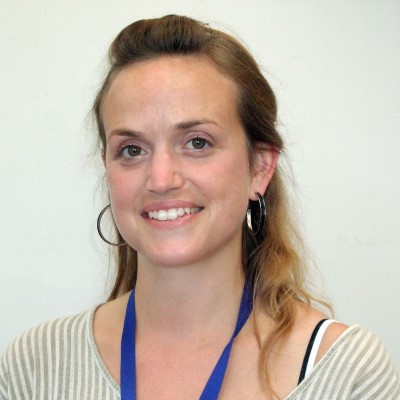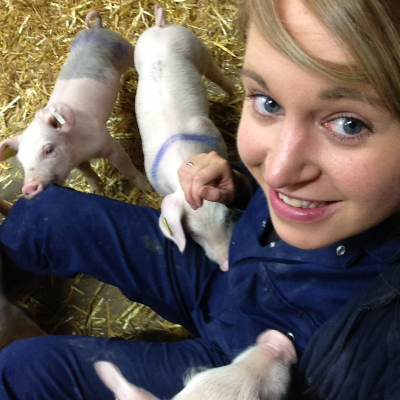CIEL | Meet the Scientist
Dr Sokratis Stergiadis
Professor in Animal Science

What project/s are you currently working on?
I am currently the principal investigator or co-investigator on several research projects and PhD programmes, focussing on how best to feed and manage ruminant animals in order to reduce their greenhouse gas (GHG) emissions; improve efficiency of feed, energy and nutrient use at animal- and farm-level; and produce more nutritious milk, dairy products and meat:
- Net-zero strategies in livestock production
Our projects develop prediction equations and farm decision support tools to inform the Nitrates Directive and ammonia & GHG inventory reporting, mitigate GHG and maximise carbon sequestration. We also work on the discovery of plant bioactive compounds to reduce methane emissions from enteric fermentation. - Food industry co-products
We are investigating the effect of co-products inclusion in dairy and beef cattle diets on productivity, feed efficiency, nutrient digestibility, methane emissions, rumen microbiome, and animal metabolism. We also assess their ensiling properties and the overall sustainability when used as animal feed. - Seaweed
This research involves studying the effect of seaweed supplementation in dairy cows’ diets on productivity, methane emissions and milk concentrations of fatty acids, macrominerals, trace elements (nutritional quality); as well as heavy metals and bromoform (food safety). - Tree fodder
We are assessing the nutritive value of willow and its potential to improve nitrogen use efficiency in sheep and develop tree-based antiparasitic strategies and solutions to disease threats in sheep. - Livestock management
This research aims to identify the animal, dietary and management factors that improve feed efficiency in dairy cows. We’re also developing feeding and environmental enrichment strategies for improved performance, health, welfare and behaviour in calves, heifers, and goat kids. - Role of dairy products in human nutrition
The aim of this research is to quantify the effect of replacing milk and dairy products with plant-based alternatives on population nutrient balance and environmental sustainability. We also quantify, and explain the reasons for, differences in nutrient composition of commercial milk and dairy products (fatty acids, macrominerals, trace elements), and assess the implications to consumers’ nutrition.
I am also the principal investigator in several commercial research projects, working with industry partners across the agricultural and feed sectors to develop novel feeds and dietary supplements in dairy cows as alternative protein sources and to reduce methane emissions, respectively, by simultaneously assessing their impact on feed efficiency, and milk production and quality.
What capability are you drawing on to deliver the research?
Our ‘farm-to-fork’ expertise and facilities allow us to assess the impact of interventions at farm level (e.g., different animal diets) from animal performance, metabolism and methane emissions through to product nutritional quality and consumer acceptance:
- The Centre for Dairy Research (CEDAR) at the University of Reading has extensive research capability to support studies with cattle, sheep, poultry, pigs, and llamas. Flexible facilities allow us to conduct a variety of multi-disciplinary research trials simultaneously.
- Animal digestion and metabolism facilities enable measurements including feed intake (via electronic feeding systems), digestion (to assess nutrient use efficiency), and methane emissions using respiratory chambers (for methane and energy metabolism measurements), automated-head chamber systems (GreenFeed, C-Lock, USA), or SF6 permeation tubes for studies using housed or grazing cattle.
- The applied dairy facility has capacity for simultaneously feeding and measuring intake, milk production and composition, and behaviour of 200 individual dairy cows in a commercial production environment.
- On the University’s Earley Gate campus, we can perform in-depth assessments of animal feeds including chemical composition (energy and nutrient contents), in vitro evaluation of their digestibility and methane emission potential using batch culture and rumen simulation techniques (RUSITEC).
- For animal-derived foods composition (milk, dairy products, meat), we work in collaboration with colleagues in Food and Nutritional Sciences (FNS) to analyse the nutritional composition (fatty acids, macrominerals, trace elements, amino acids, antioxidants, vitamins), safety (microbiological assessments), flavour compounds, and organoleptic characteristics (trained sensory panels) of milk, dairy products and meat. The FNS’s pilot processing facilities include dedicated infrastructure for the processing of cheese, cultured milk products, ice cream, and UHT milk. These also enable the investigation of the transfer of nutrients throughout the supply chain and the effect of milk composition on processing characteristics.
But it’s the wide-ranging experience and expertise of our research staff that is arguably our most valuable resource, including my own applied research experience of actively leading, coordinating or participating in multidisciplinary research consortia.
What would be your ideal research project, assuming no barriers to resources?
In terms of fundamental science, the between-animal variation for specific characteristics of interest is fascinating. Animals under the same breeding, feeding and management conditions can substantially differ in terms of productivity, efficiency, methane emissions and nutritional quality of their milk and meat. For this, I would design a long-term project to investigate the biological factors for this variation. I would follow, from their birth to the end of life, many animals of the same breeding and fed & managed under the same conditions, and regularly assess their rumen ecology and fermentation, and biofluids’ metabolome, to unravel the role of rumen microbiome and the specific metabolic pathways that characterize the animals with the most desirable productive, environmental and product quality characteristics. This knowledge can inform targeted interventions in different life stages to manipulate metabolism towards improved productivity and reduced environmental footprint of ruminant production.
In terms of applied science, I would develop a multidisciplinary farm-to-fork research team to investigate the effect of novel diets and feeds for dairy and beef cattle on agronomy (soil quality, biomass production); feed quality (energy and nutrient contents and digestibility); animal performance (production, efficiency); and physiology (rumen ecology and function, metabolic pathways). I would extend this work to include the environmental footprint (GHG emissions across the supply chain, biodiversity), economic performance, and product quality (fatty acids, minerals, vitamins, amino acids, antioxidants). This would ensure that trade-offs are taken into consideration when intervening in key stages of the supply chain, reassuring overall sustainability and benefits across stakeholders.
How did you arrive at doing what you do now?
I was born and grew up in Thessaloniki, Greece. I studied for a BSc in Agriculture with Animal Production, followed by a MSc in Animal Production at Aristotle University of Thessaloniki between 1999 and 2006. I moved to the UK immediately after to undertake a PhD on the “Effect of dairy management on milk quality” at Newcastle University. This investigated the effect of dairy cow diets, breeds and production systems on milk nutrient concentrations, focussing on fatty acids, protein, antioxidant and vitamin profiles.
I remained at Newcastle for a further 4 years as Research Associate in the School of Agriculture Food and Rural Development where my research covered the development of integrated livestock breeding and management strategies to improve animal health, product quality and performance in organic and ‘low input’ dairy production.
Between 2013 and 2015 I joined the Agri-Food and Biosciences Institute (AFBI) as Higher Scientific Officer/Ruminant Nutritionist. My work at AFBI defined optimal pasture composition and management to maximise nitrogen utilisation and productivity on dairy and beef cattle and minimize GHG emissions.
My first academic position was as Lecturer in Animal Science (University of Reading, 2015 – 2019), before taking up my current position with the University.
Find out more about our Associate Research Member, the University of Reading, and the contact details, current roles and published work of Dr Sokratis Stergiadis.







